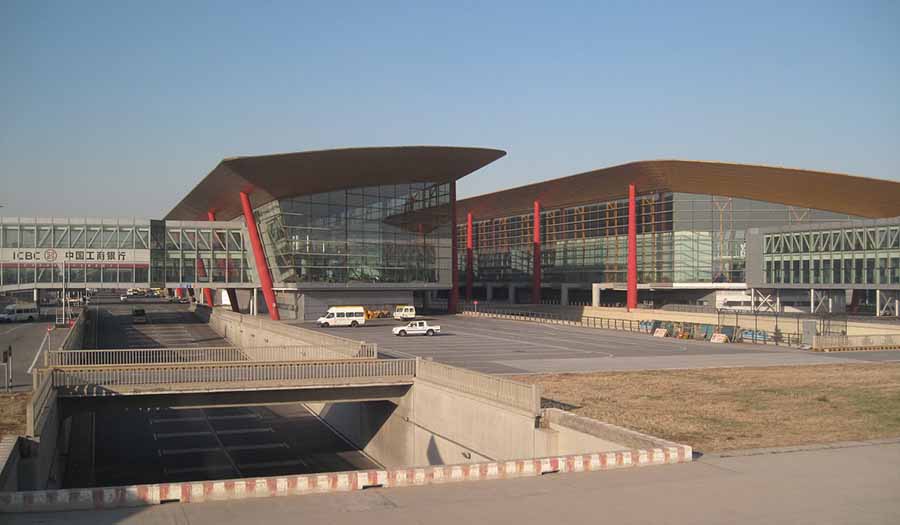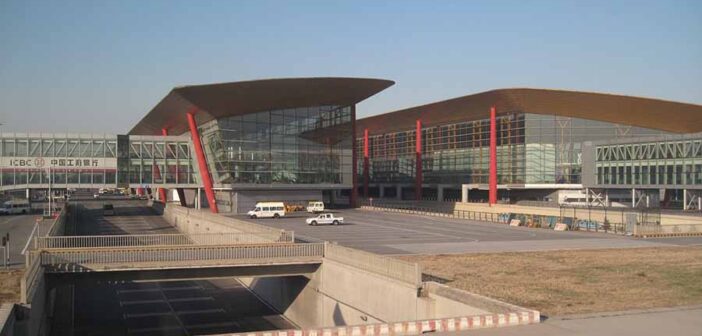
Beijing Capital International Airport (PEK), located 32 kilometres northeast of Beijing’s city centre, stands as one of Asia’s busiest hubs, serving as a primary gateway for both domestic and international travellers. The airport’s three terminals offer a functional and efficient experience, catering to millions of passengers annually.
Terminal 1, the smallest, focuses on domestic flights, while Terminal 2 handles a mix of domestic and international routes. Terminal 3, the largest, is a modern complex designed for high passenger volumes, with 66 gates and an automated people-mover to ease navigation. The layout across terminals is clear, with signage in English and Chinese guiding passengers through check-in, security, and boarding areas. However, the sheer size of Terminal 3 can require longer walking times, so travellers should allow extra time for movement.
Accessing the airport is straightforward, with multiple transport options connecting to Beijing’s city centre. The Airport Express rail, launched in 2008, links the airport to Dongzhimen in about 25 minutes for 25 CNY, offering a quick and affordable route to the subway network. Sixteen shuttle bus routes serve destinations like Wangfujing, Beijing Railway Station, and Zhongguancun, with fares ranging from 15 to 30 CNY depending on the route.
Taxis to central Beijing take 40-60 minutes, costing around 100-150 CNY, though traffic can extend travel time during peak hours. For those driving, four express tollways provide direct access, with parking available at all terminals.
The passenger experience is enhanced by a range of dining and retail options. Terminal 3’s “global kitchen” features 72 outlets, from fast food to formal dining, offering Chinese, Western, and bakery options at city-equivalent prices. Highlights include local noodle shops and international chains like Starbucks. Retail spans 16,200 square metres of domestic stores and 12,600 square metres of duty-free shops, selling everything from souvenirs to luxury goods. Convenience services, including banks and internet access, are also available. Facilities are comprehensive, with free Wi-Fi, medical centres, and charging points across terminals. Lounges like the Air China First and Business Class Lounge and BGS Premier Lounge offer comfortable seating, Wi-Fi, and snacks for eligible passengers, though access may require a fee or membership. For those needing rest, free lounge chairs and paid sleep pods are available, but free showers are absent.
On-time performance is a mixed bag, with a reported punctuality rate of 81.65% in 2019. Delays can arise from air traffic congestion, particularly during peak hours, as the airport handles around 1,500 daily flights. Weather, such as rainfall or hail, is another common cause of disruption, alongside arrival and departure pressures that strain capacity.
Security checks, while thorough, can be slow, with reports of lengthy queues due to detailed inspections of electronics and carry-ons. Travellers are advised to arrive at least two hours early for domestic flights and three for international to account for potential bottlenecks.
Connections at Beijing Capital are efficient, especially within Terminal 3, where a high-tech luggage system can transfer bags in as little as five minutes. Inter-terminal transfers are facilitated by a free shuttle bus running every 10-15 minutes, taking about 10-15 minutes between terminals. A 1.5-kilometre walkway connects Terminals 2 and 3 for those preferring to walk, though no walkway exists to Terminal 1. International transit passengers may face additional security and immigration checks, which can take up to an hour, particularly if bags need reclaiming. A 24-hour visa-free transit policy eases short layovers for eligible nationalities, allowing seamless connections without leaving the restricted area.
Potential delays to watch for include slow security processes, with some passengers reporting up to five minutes per person due to meticulous checks. Congestion during peak afternoon hours, when multiple international flights arrive, can overwhelm baggage handling and immigration counters, risking missed connections for those with layovers under 1.5 hours. Staff language barriers have also been noted, which may slow down assistance for non-Chinese speakers. Despite these challenges, the airport’s advanced biometric systems and contactless check-in options streamline parts of the journey, making it a practical hub for travellers exploring China or connecting to global destinations.
Hainan Airlines
Hainan Airlines operates direct flights to Ireland (Dublin) from Terminal 2 (desks 1-30 for Hainan). Check-in is in the international area, with dedicated Hainan counters; online check-in unavailable for international flights.
Check-in opens 3 hours before; closes 90 minutes prior. No online for international; self-service kiosks (12 available) for ID/passport scan. For Dublin (HU751), expect dedicated counters near gate areas. Departure Gates are Terminal 2 (e.g., 30-40 for international/EU) Gates announced 45-60 minutes before; for transatlantic like Dublin, commonly 33-35. Boarding 30-45 minutes prior; gates close 15 minutes before. Use airport screens or Hainan hotline for updates




